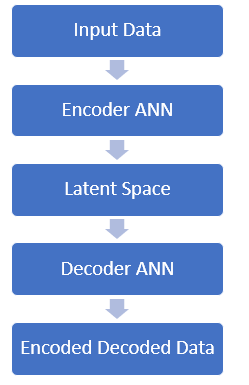Reinforcement Based Concrete Modelling in Commercial Buildings Using Machine Learning Simulations
Keywords:
Reinforcement Concrete, Commercial Buildings, Modelling, Machine Learning, SimulationsAbstract
This study focuses on modelling the strength properties of reinforced concrete containing mineral admixtures using variational auto encoders and artificial neural networks. Knowing that the model projections of force have a low percent error is reassuring information to have. The reliability of the model is further supported by this piece of evidence, which demonstrates that the model is accurate. Due to the significant degree of similarity between the two datasets, this result suggests that the model is credible due to the similarities seen in samples. When all of the criteria are considered, this is a positive indicator that the model that was picked has the potential to effectively forecast the behavior of the system.
Downloads
References
Azuatalam, D., Lee, W. L., de Nijs, F., & Liebman, A. (2020). Reinforcement learning for whole-building HVAC control and demand response. Energy and AI, 2, 100020.
Dhas, C. S. G., Yuvaraj, N., Kousik, N. V., & Geleto, T. D. (2022). D-PPSOK clustering algorithm with data sampling for clustering big data analysis. In System Assurances (pp. 503-512). Academic Press.
Ponnusamy, M., Bedi, P., Suresh, T., Alagarsamy, A., Manikandan, R., & Yuvaraj, N. (2022). Design and analysis of text document clustering using salp swarm algorithm. The Journal of Supercomputing, 1-17.
Wang, C., Song, L. H., & Fan, J. S. (2022). End-to-End Structural analysis in civil engineering based on Machine learning. Automation in Construction, 138, 104255.
Goh, G. D., Sing, S. L., & Yeong, W. Y. (2021). A review on machine learning in 3D printing: applications, potential, and challenges. Artificial Intelligence Review, 54(1), 63-94.
Jayawickrema, U. M. N., Herath, H. M. C. M., Hettiarachchi, N. K., Sooriyaarachchi, H. P., & Epaarachchi, J. A. (2022). Fibre-optic sensor and Machine learning-based structural health monitoring systems for civil structures: A review. Measurement, 111543.
Wakjira, T. G., Ebead, U., & Alam, M. S. (2022). Machine learning-based shear capacity prediction and reliability analysis of shear-critical RC beams strengthened with inorganic composites. Case Studies in Construction Materials, 16, e01008.
Benedetti, M., Lloyd, E., Sack, S., & Fiorentini, M. (2019). Parameterized quantum circuits as machine learning models. Quantum Science and Technology, 4(4), 043001.
Torrey, L., Walker, T., Shavlik, J., & Maclin, R. (2005, October). Using advice to transfer knowledge acquired in one reinforcement learning task to another. In European Conference on Machine Learning (pp. 412-424). Springer, Berlin, Heidelberg.
Basilio, S. A., & Goliatt, L. (2022). Gradient boosting hybridized with exponential natural evolution strategies for estimating the strength of geopolymer self-compacting concrete. Knowledge-Based Engineering and Sciences, 3(1), 1-16.
Degtyarev, V. V., & Tsavdaridis, K. D. (2022). Buckling and ultimate load prediction models for perforated steel beams using machine learning algorithms. Journal of Building Engineering, 51, 104316.
Hiyama, K., & Omodaka, Y. (2021). Operation of climate-adaptive building shells utilizing machine learning under sparse data conditions. Journal of Building Engineering, 43, 103027.
Learning, D. R. (2018). Improving Adaptive Gameplay in Serious Games Through Interactive. Cognitive Infocommunications, Theory and Applications, 13, 411.
Rajalakshmi, M., Saravanan, V., Arunprasad, V., Romero, C. T., Khalaf, O. I., & Karthik, C. (2022). Machine learning for modeling and control of industrial clarifier process. Intelligent Automation & Soft Computing, 32(1), 339-359.
Smarra, F., Jain, A., De Rubeis, T., Ambrosini, D., D’Innocenzo, A., & Mangharam, R. (2018). Data-driven model predictive control using random forests for building energy optimization and climate control. Applied energy, 226, 1252-1272.
Gunjan, V. K., Vijayalata, Y., Valli, S., Kumar, S., Mohamed, M. O., & Saravanan, V. (2022). Machine Learning and Cloud-Based Knowledge Graphs to Recognize Suicidal Mental Tendencies. Computational Intelligence and Neuroscience, 2022.
Kuleshov, V., Fenner, N., & Ermon, S. (2018, July). Accurate uncertainties for Machine learning using calibrated regression. In International conference on machine learning (pp. 2796-2804). PMLR

Downloads
Published
How to Cite
Issue
Section
License

This work is licensed under a Creative Commons Attribution-ShareAlike 4.0 International License.
All papers should be submitted electronically. All submitted manuscripts must be original work that is not under submission at another journal or under consideration for publication in another form, such as a monograph or chapter of a book. Authors of submitted papers are obligated not to submit their paper for publication elsewhere until an editorial decision is rendered on their submission. Further, authors of accepted papers are prohibited from publishing the results in other publications that appear before the paper is published in the Journal unless they receive approval for doing so from the Editor-In-Chief.
IJISAE open access articles are licensed under a Creative Commons Attribution-ShareAlike 4.0 International License. This license lets the audience to give appropriate credit, provide a link to the license, and indicate if changes were made and if they remix, transform, or build upon the material, they must distribute contributions under the same license as the original.





